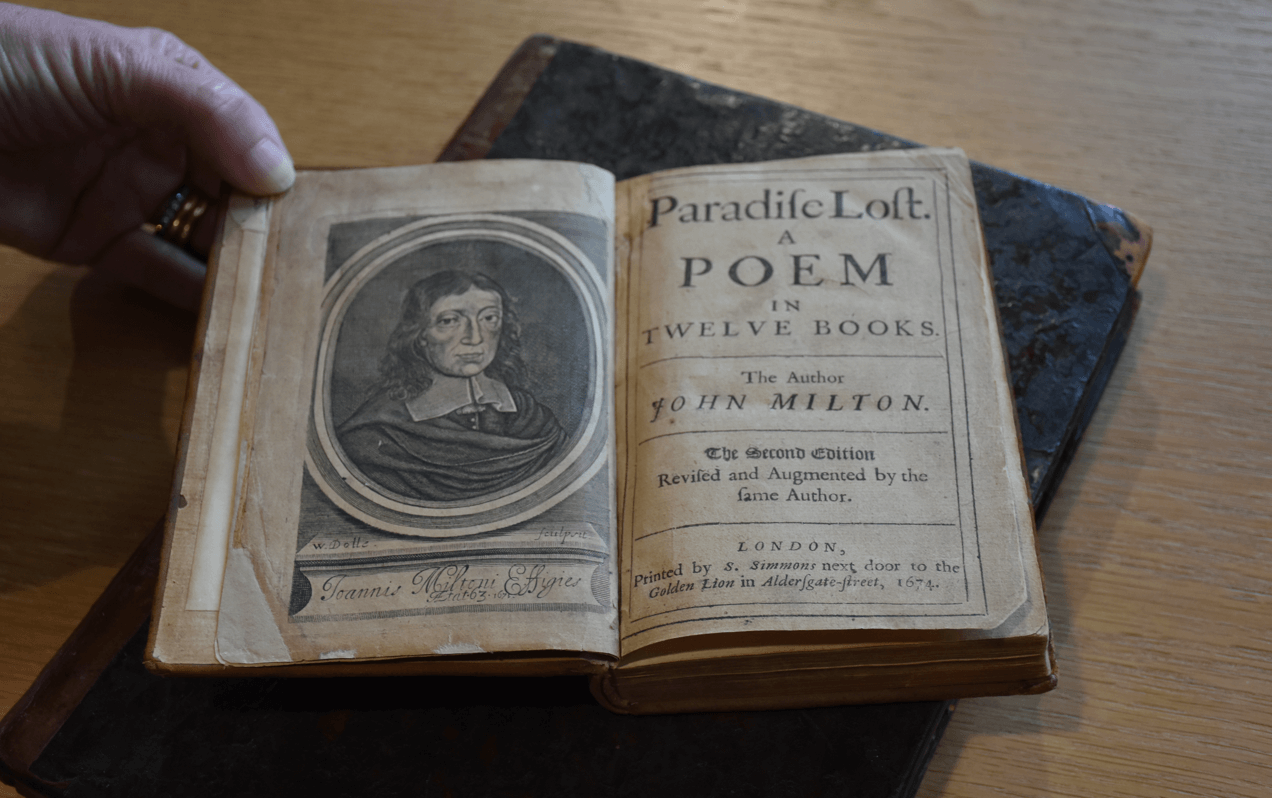

Thanks to the generosity of the Old Pauline Club’s traditional Feast Service donation, the Kayton Library has just completed conservation work on two of the School’s rare books.
We employed Katarina Kelsey, specialist book conservator at the National Conservation Service who cleaned the books, reattached their front and back covers, and made repairs to damaged page corners and spines.
Pharetra Doctorum Philosophorum Et Poetrum, published in Nuremburg in 1472, is one of only a few incunabula held in the St Paul’s collection. These pre-1500 books are very special to us and the Pharetra is a particularly fine example so we are delighted to have been able to conserve it for the future.
Katarina Kelsey at NCS said “It was suffering from a warped spine and a detached front board. With the printed text originating in the 15th century, the speckled calf boards date likely from an 18th century rebind. At some point, the whole binding has been rebacked again, most likely in the 19th or 20th century. This is not an unusual life for such a book. Indeed, the speckled leather is prone to deterioration at the joints due to the method of its decoration: weak acid was flicked across the book. The front and back boards were dampened, dried, and reattached with fine Japanese paper.”
The second book is John Milton’s Paradise Lost from 1674. St Paul’s has a substantial number of texts by Milton in our Rare Book collection. 2024 marks the 350th anniversary of his death on 8 November 1674. We hope to commemorate his life by showing as many of his books as possible at our Treasures event next November. This copy is particularly interesting because it is the first edition where the book was divided into 12 books, rather than ten. Previously the book was so badly damaged that it was effectively unusable.
Katarina’s report said “A beautiful binding with a blind tooled Cambridge panel, bound in tawed calfskin, most likely near contemporary with the printing of this book. It would not have been its original binding, however, as the textblock had been trimmed down. The decision to re-bind could have been made by its original custodian, having purchased it from a bookseller in paper wrappers, or rebound to suit the buyer’s style. The original sewing supports were split and it was decided the best decision would be to mechanically lift the tawed spine covering mechanically with a fine steel spatula. Losses from worming, the back joint, board corners and the area of the spine which had previously suffered either mechanical or inherent wear were infilled and re-adhered.”
Written by Hilary Cummings, Librarian, The Kayton Library